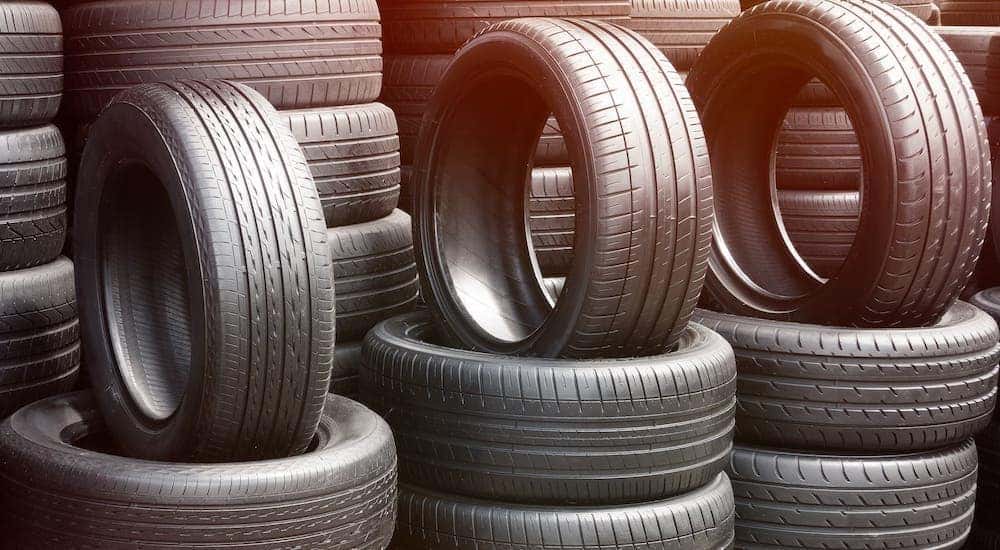Trusted Tire Shop Morris: Comprehensive Tire Solutions and Exceptional Service
Trusted Tire Shop Morris: Comprehensive Tire Solutions and Exceptional Service
Blog Article
Tire Service: The Influence of Weather
When it comes to making sure optimum performance and safety and security when traveling, comprehending the influence of climate condition on tire solution is crucial. From scorching heat to icy roads, each weather condition aspect can substantially affect tire performance and overall driving experience. By diving into the effects of varying weather on tires, vehicle drivers can obtain useful insights that may enhance their automobile's performance and long life. In this conversation, we will certainly check out the intricate relationship between weather and tire solution, shedding light on the importance of weather-specific tire maintenance techniques and considerations.
Warmth and Tire Performance
When exposed to high temperature levels, tires experience adjustments in performance that can significantly affect automobile safety and handling. The heat created from extended driving or hot weather condition problems causes the tire rubber to soften, resulting in decreased step life and enhanced wear. As the rubber ends up being softer, the tire's grip on the road lessens, influencing braking distances and total grip. In extreme instances, excessive heat can even cause tire blowouts, posing an extreme security risk to the automobile and its owners.
Additionally, high temperatures can accelerate the process of tire aging, creating the rubber to deteriorate a lot more rapidly. To mitigate the effects of heat on tire efficiency, vehicle drivers should frequently check their tire pressure, turn tires to ensure even put on, and check for any type of signs of damages.
Cold Weather Condition Results
Winter conditions can have a considerable effect on tire performance and safety and security. As temperatures decrease, tire rubber can set, causing reduced grip on icy or snow-covered roadways. In cool climate, tires might also shed atmospheric pressure a lot more rapidly, which can influence managing and fuel effectiveness. Additionally, cold temperature levels can trigger tire sidewalls to tense, raising the danger of damage from pits or various other roadway threats.
To minimize the results of winter on tires, it is important to routinely check tire pressure and inflate them to the supplier's advised degrees. Using winter months or all-season tires designed for cold weather condition problems can also enhance traction and grasp on icy or snowy roads - morris tire and alignment. Proper tire maintenance, consisting of regular evaluations for wear and damages, becomes also a lot more essential during colder months to ensure optimal performance and security
Rainy Issues Impact
During rainy conditions, tire efficiency and security can be dramatically influenced by the wet road surfaces and minimized presence. The tread pattern of tires plays a crucial duty in keeping grip on wet roadways. Tires with worn-out footsteps are much more vulnerable to hydroplaning, where a layer of water accumulates between the road and the tire surface area, resulting in loss of grip. To combat this, chauffeurs must routinely check their tires for adequate tread depth and think about purchasing tires particularly developed for wet conditions.

Snow and Tire Safety
Snow-covered roadways pose one-of-a-kind difficulties for vehicle drivers, stressing the significance of proper tire choice and maintenance. When driving in snowy problems, having the ideal tires can make a substantial difference in safety and security and efficiency. Winter tires are created with unique rubber substances and walk patterns to supply better traction on snow and ice compared to all-season tires. The deeper footsteps and sipes of winter tires aid grip the road you could try these out much better, decreasing the risk of moving and slipping.
In addition to utilizing winter tires, it is essential to ensure they are properly blown up. Cold weather condition can trigger tire pressure to go down, impacting grip and handling (tires morris il). Routinely inspecting and maintaining the right tire stress is vital for optimal performance in snowy conditions

Weather-Related Tire Upkeep
When confronted with numerous climate condition, proper tire maintenance comes to be a crucial aspect of vehicle safety and efficiency. Weather-related tire upkeep includes a series of practices aimed at guaranteeing optimal tire feature and longevity in different weather scenarios. One crucial aspect of weather-related tire upkeep is tire stress guideline. Rising and fall temperatures can create tire stress to vary, affecting grip and gas performance. Routinely readjusting and checking tire pressure according to producer referrals is necessary for safe driving in transforming climate condition. In addition, tire tread depth plays a significant function in handling various weather elements. Tires with sufficient tread depth offer much better grip on damp or icy roadways, decreasing the threat of skidding or hydroplaning. When tread wear reaches a specific deepness is essential for preserving traction and security in negative weather condition, examining tire step on a regular basis and changing tires. By prioritizing weather-related tire upkeep, chauffeurs can boost safety and security, improve vehicle efficiency, and lengthen the life expectancy of their tires.
Verdict
To conclude, climate problems have a considerable effect on tire efficiency and safety. From warmth affecting tire pressure and wear to winter lowering grip, it is important to think about the weather condition when maintaining and using tires. Wet problems can lower grip and cause hydroplaning, while snow can raise the danger of mishaps if tires are not properly outfitted. Weather-related tire maintenance is crucial in ensuring more info here ideal performance and safety and security click here now when traveling.
In this discussion, we will explore the intricate partnership in between weather problems and tire service, dropping light on the relevance of weather-specific tire maintenance techniques and considerations.

Report this page